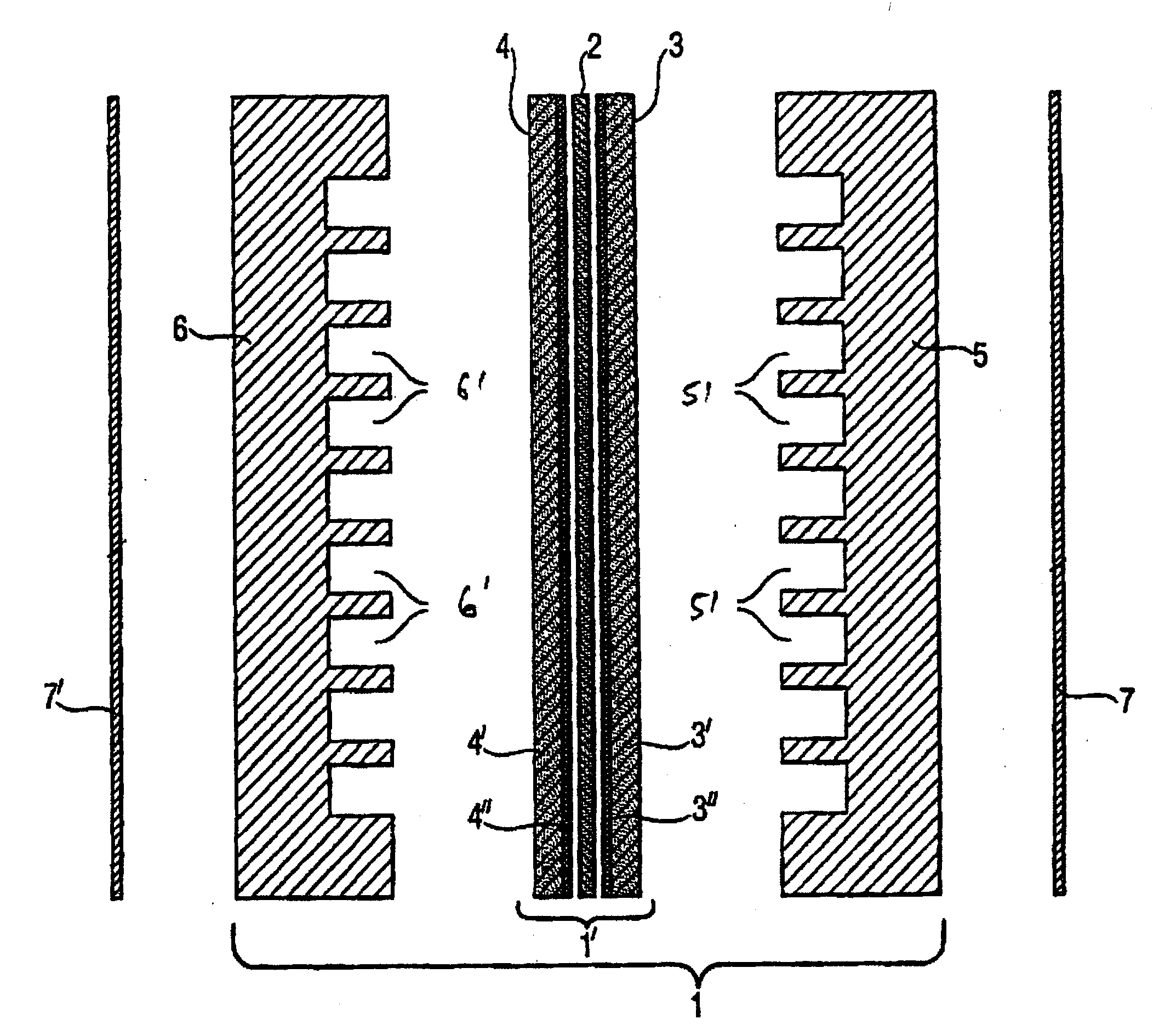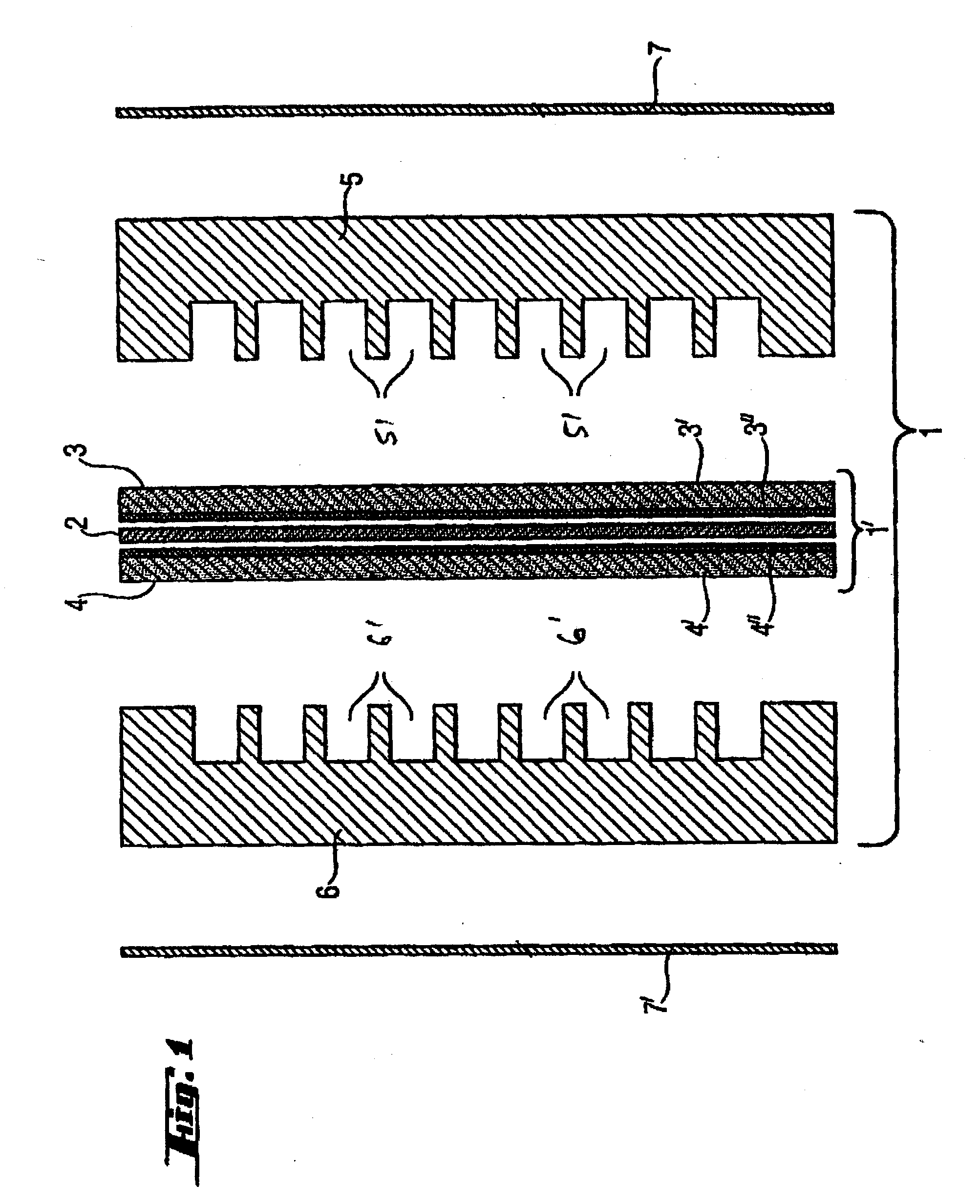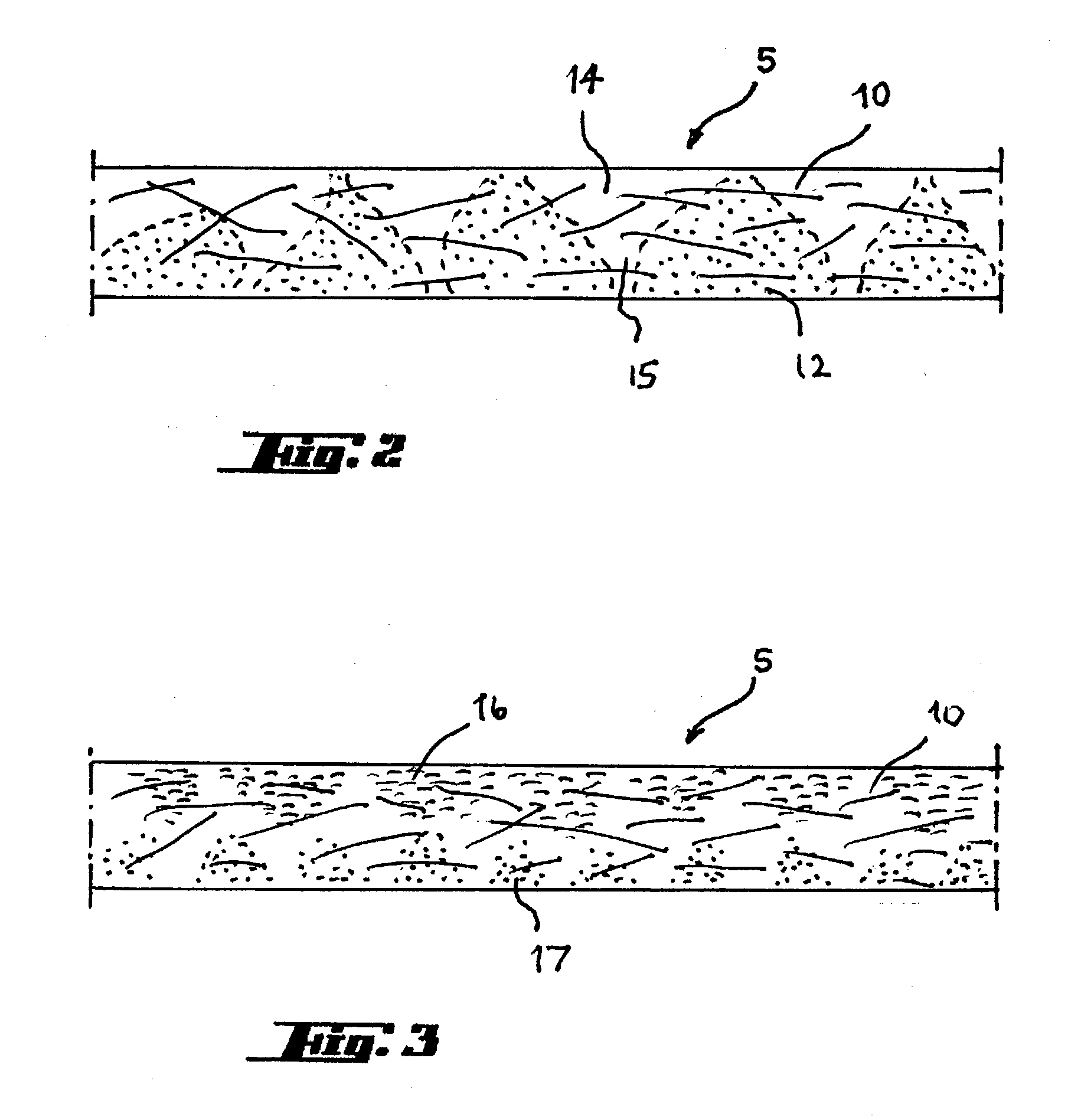Carbon fiber electrode substrate for electrochemical cells
a technology of electrochemical cells and electrode substrates, which is applied in the direction of fuel cell details, final product manufacturing, synthetic resin layered products, etc., can solve the problems of high impregnated substrates, low ohmic (electrical) resistance and adequate mechanical strength, and high resistance in the through-plane direction, etc., to achieve high electrical conductivity, high carbon content, and high porosity
- Summary
- Abstract
- Description
- Claims
- Application Information
AI Technical Summary
Benefits of technology
Problems solved by technology
Method used
Image
Examples
example 1
[0094] A carbon fiber paper characterized by a porosity of approximately 95%, a through-plane resistance of 60 mOhm.multidot.cm.sup.2 and a thickness of 0.17 mm was used as the precursor. The carbon fiber paper was made of PAN-based carbon fibers with a diameter of 7 .mu.m available under the trademark .RTM.SIGRAFIL C. The paper was utilized as rolled good.
[0095] The paper web was two times impregnated with a water-based slurry containing mass fractions of 10% of dispersed phenolic resin and 10% of graphite powder, with 90% of the particles being smaller than 5.5 .mu.m. The impregnated paper was dried and the resin was cured. For drying and curing the paper webs were conveyed at a rate of 100 m / h through a continuous furnace. The temperature the material was subjected to increased from 100.degree. C. at the entrance zone of the furnace to 250.degree. C. near the exit. Subsequently the resin impregnated paper was graphitized under a nitrogen atmosphere at a temperature of 1700.degree...
example 2
[0096] A carbon fiber paper made of PAN based carbon fibers (.RTM.SIGRAFIL C, 7 .mu.m diameter), characterized by a porosity of approximately 94%, through-plane resistance of 60 mOhm.multidot.cm.sup.2 and a thickness of 0.28 mm was used as the precursor. Further processing was the same as in Example 1
example 3
[0097] The precursor of Example 2 was impregnated once only and further processed as described in Example 1.
PUM
| Property | Measurement | Unit |
|---|---|---|
| thickness | aaaaa | aaaaa |
| thickness | aaaaa | aaaaa |
| mean length | aaaaa | aaaaa |
Abstract
Description
Claims
Application Information
 Login to View More
Login to View More - R&D
- Intellectual Property
- Life Sciences
- Materials
- Tech Scout
- Unparalleled Data Quality
- Higher Quality Content
- 60% Fewer Hallucinations
Browse by: Latest US Patents, China's latest patents, Technical Efficacy Thesaurus, Application Domain, Technology Topic, Popular Technical Reports.
© 2025 PatSnap. All rights reserved.Legal|Privacy policy|Modern Slavery Act Transparency Statement|Sitemap|About US| Contact US: help@patsnap.com



